Here at DC Histories, we try to make sense of the continuity that perplexes, befuddles, and intimidates. We discuss what worked and what didn’t. This week, we’re talking about Batman’s underground lair, the Batcave.
While it was true from the 1939 beginning of Batman that he was secretly Bruce Wayne, wealthy playboy, the rest of the Batman canon was developed in bits and pieces over the next several decades. Robin didn’t debut until a year after Batman, Two Face came in 1942, and Alfred Pennyworth came to live at Wayne Manor the following year. During this same time period, the idea of a trophy room for Batman and Robin was developed. Located in a locked room in Wayne Manor, the Hall of Trophies was just a fun place for the Dynamic Duo to reminisce about past cases.
This room was clearly above ground, as shown by the giant window in the first panel, so this isn’t the official debut of the Batcave.
In 1943, Batman’s official underground lair was introduced not in the pages of the Batman comics but in Batman’s first movie serial. Released one chapter a week over the course of 15 weeks, Batman introduced movie goers to the caped crusader. It also was the first place that Batman fans saw something called the “Bat’s Cave.” It debuted in the serial’s second chapter.
http://www.youtube.com/watch?v=3VcdhSWaFmo
In this serial, the Bat’s Cave seemed to only consist of a desk, some chairs, a candle or two,and steel bars. It was linked to a grandfather clock in one of Wayne Manor’s studies, a feature that would stick around for years.
Soon, the Hall of Trophies and the Bat’s Cave were combined to become a single space. The first cross-section of the Batcave in 1948 showed a pretty simple design. In this adventure, a criminal gained access to the Batcave. Batman and Robin hunted the criminal down and, in the process, introduced readers to the Batcave layout and construction. It was a neat little bit of business.
The Batcave was now a place for Batman to work on cases. It had areas for Batman to tinker on his many vehicles, an area for him to conduct scientific research, and filing cabinets full of information about local and national criminals. It was also a place for Batman to relax a bit between cases and to eat the occasional meal provided to him by Alfred. It was, truly, the original man cave.
A few years later, Batman and Robin once again walked through the Hall of Trophies, now seemingly existed in a separate room from the rest of the Batcave. The cave’s layout was already in flux. It would remain in flux to this day as each subsequent writer and artist changed the Batcave to fit his or her story and style.
The neat thing about this 1948 and 1950 version of the Batcave is that there is a continuity to the Hall of Trophies. Two of the most iconic trophies in the Batcave, the giant dinosaur and the massive penny, came from actual published cases. The dinosaur, for example, came from a 1946 case in which mechanical dinosaurs proved a challenge to law and order.
Though the dinosaur that Batman eventually took for a display item changed from being modified Brachiosaurus to a Tyrannosaurus Rex depending on who was drawing the story, the trophy definitely came from this case.
Similarly, the iconic giant penny came from a mostly forgotten battle against a villain called the Penny Plunderer. He was a crook who used pennies during his crimes. I do believe he was eventually thwarted by inflation.
As the Batcave was developed organically over several years, it had no hard and firm origin story for a long time. It was assumed that the Batcave had simply always existed. Eventually, the Batman writers went back and told the story of how Bruce Wayne discovered the cave below Wayne Manor and built his hideout.
In these early adventures, Wayne Manor was not a house that the Wayne family has passed down from generation to generation. The house was just on a property that Bruce Wayne bought while shopping around. Only after falling through rotted floorboards of a barn on this property did Bruce even discover that a cave existed.
Bruce quickly developed the cave into being his hideout. That seemed easier than having to keep a large portion of his mansion locked off from guests. The Batcave was his place of refuge and meditation.
All that changed when Dick Grayson left for college. Suddenly, Wayne Manor felt awfully big and empty. To keep himself from becoming despondent, Bruce moved his entire Batman operation from the sprawling suburbs to downtown Gotham. There, he took over a few floors of the Wayne Foundation building and converted a secret sub-basement into a new Batcave. Luckily, the building had room for that giant penny and dinosaur that Bruce loved so very much. Alfred, of course, stayed on with Bruce and also made the transition downtown.
A few years later, Bruce transitioned back to Wayne Manor and moved the bulk of his operation back to the original Batcave.
By 1985, the Batcave was huge. Remember that underground cavern in 1948? That was no more. Now the Batcave took up an entire mountain. Everything was compartmentalized and could only be accessed by elevators between its various subfloors. It was massive, insane, and structurally unsound. I really don’t see how a sinkhole didn’t immediately open up around Wayne Manor.
After the Crisis on Infinite Earths hit, characters’ origins got reset. In a new origin story for Batman, writer Denny O’Neil confirmed that Wayne Manor was actually the house Bruce grew up in and not just a nice place he bought. While running away from his parents one day, a young Bruce fell through rotten planks in his yard. He found himself in what would one day become the Batcave.
If this seems familiar to you, it’s probably because this specific version of Batman’s origin became the basis for the flashbacks and training sequences in 2005’s Batman Begins.
During Zero Month, it was revealed that a more mature Bruce explored the cave many years later. From there he cut into the rock, created a staircase which lead to a grandfather clock in a study, and developed a location to store his various Bat-related items.
While readers weren’t given another cross-section of the Batcave during the ’90s version of DC’s ongoing Who’s Who line, they were given a nice presentation of the Batcave as it existed for most of that time period. Try to spot the addition of Ace the Bat-Hound, the display cases for the costumes of both Dick Grayson and Jason Todd, and the original Red Hood getup.
The Batcave was changed in 1998 when a giant earthquake hit Gotham City. It turned out that Batcave was actually a symptom of a fault line that ran through the area. The quake destroyed the Batcave, much of Wayne Manor, and many of the trophies that Batman had kept for years.
That sinkhole that I mentioned earlier actually came to pass. A giant hole opened right in front of Wayne Manor, which partly destroyed the building. Luckily, Bruce Wayne is rich so after stability was returned to Gotham City and its surrounding area, Bruce was able to rebuild the Batcave along with his ancestral home.
During the No Man’s Land, Batman took to using satellite Batcaves. These were small rooms hidden around Gotham City that could be accessed on the fly. From these remote locations, Batman could still access all of databases and files that he needed to fight crime.
A few years later, when Bruce Wayne was accused of killing his girlfriend, Batman retired his civilian guise and became Batman full time. Realizing that literally every single person in his life disagreed with this decision, Batman left them (and the Batcave) to work as a fully independent operator. This new status came with another satellite Batcave.
Of course, everything was restored back to normal six months later and it was like that whole story never happened.
When Bruce died during the events of Final Crisis, Dick Grayson took over the Batman mantel. After deciding that driving out to Wayne Manor after every case was just too much, Dick took over the old Batcave located underneath the Wayne Foundation building.
When Bruce returned to the land of the living, he again moved into the cavern beneath his house.
How has the Batcave changed in the New 52? According to what we saw in the first Batman issue of the relaunch, it didn’t change much. Still located in the Batcave is that giant penny, dinosaur statue, and the many vehicles. The giant Joker card also remains, though I don’t believe that its origin story was ever told in-panel. It just looks cool so the many different Batman artists keep it around.
It sounds like we’re getting the New 52’s Batcave origins told during Zero Month. Have things changed since Flashpoint? Did Bruce discover the caverns beneath Wayne Manor as a child or as an adult? We’ll find that out together. In any case, the Batcave’s main function remains. It is Batman’s one-stop shop for anything he needs to fight crime. But try to imagine how much it costs to keep that place lit. Here’s hoping Bruce Wayne’s investments never go south.
Jeff Reid knows that he didn’t mention every version of the Batcave. There have been dozens. Tell him about your favorite one below or on Twitter.
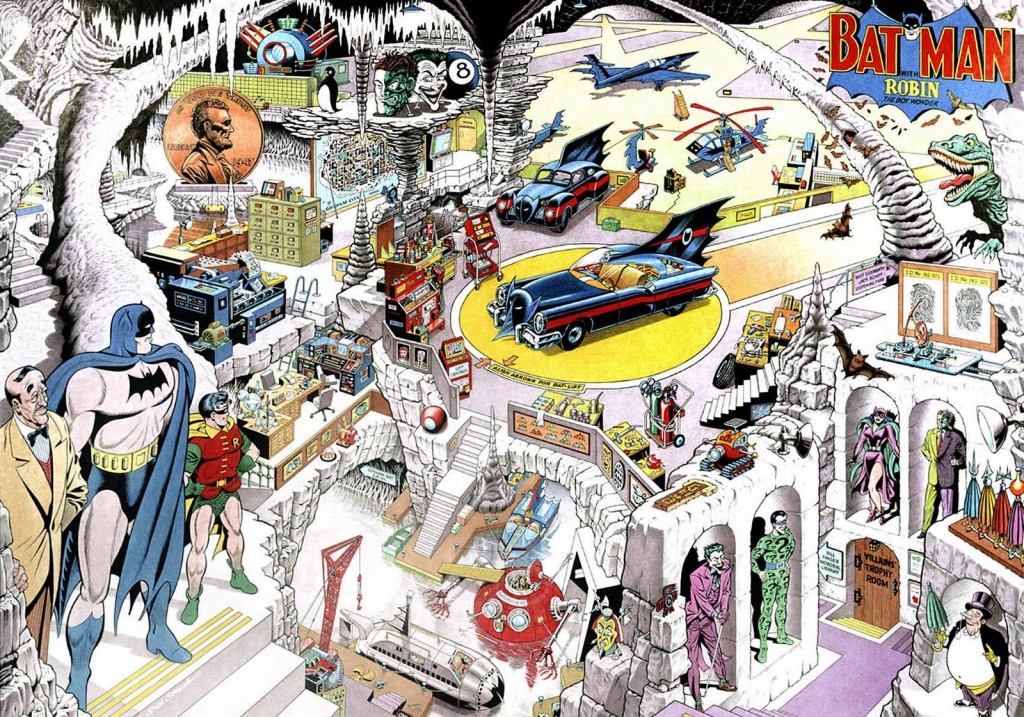

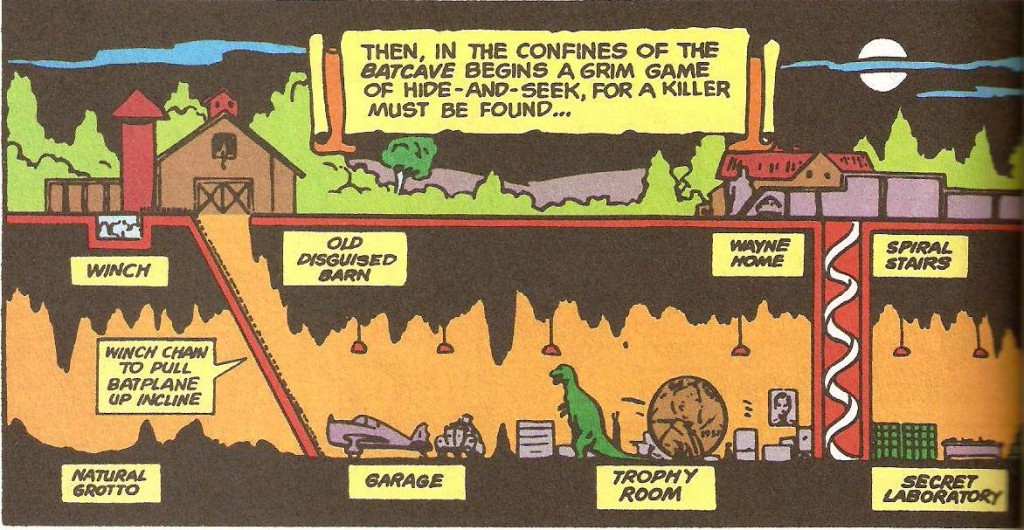
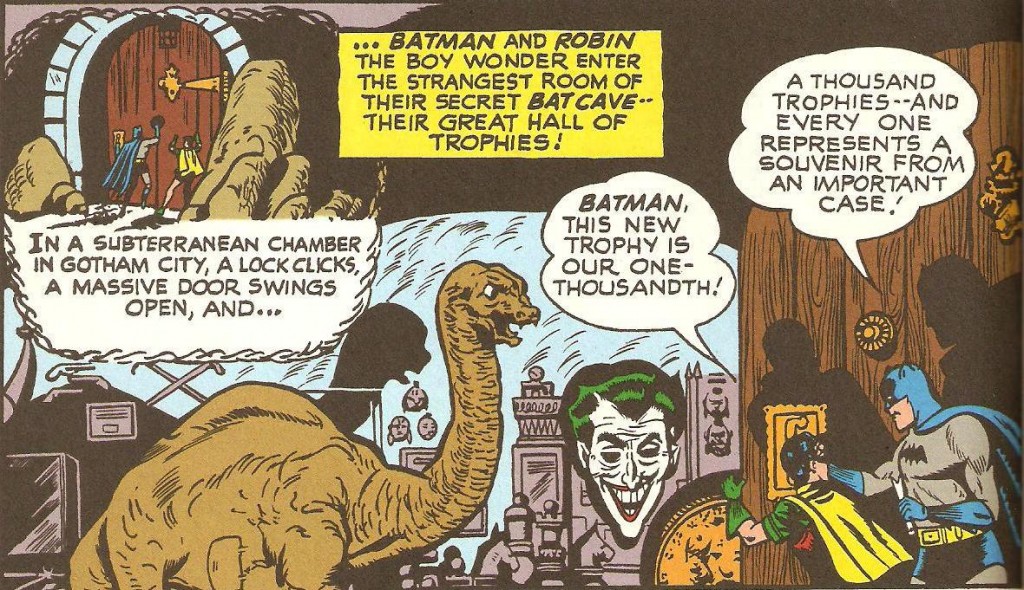
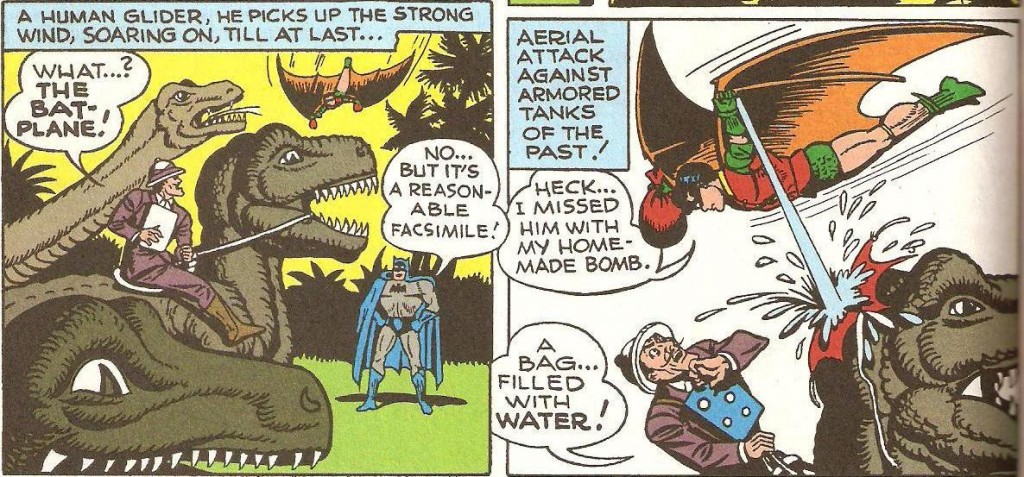



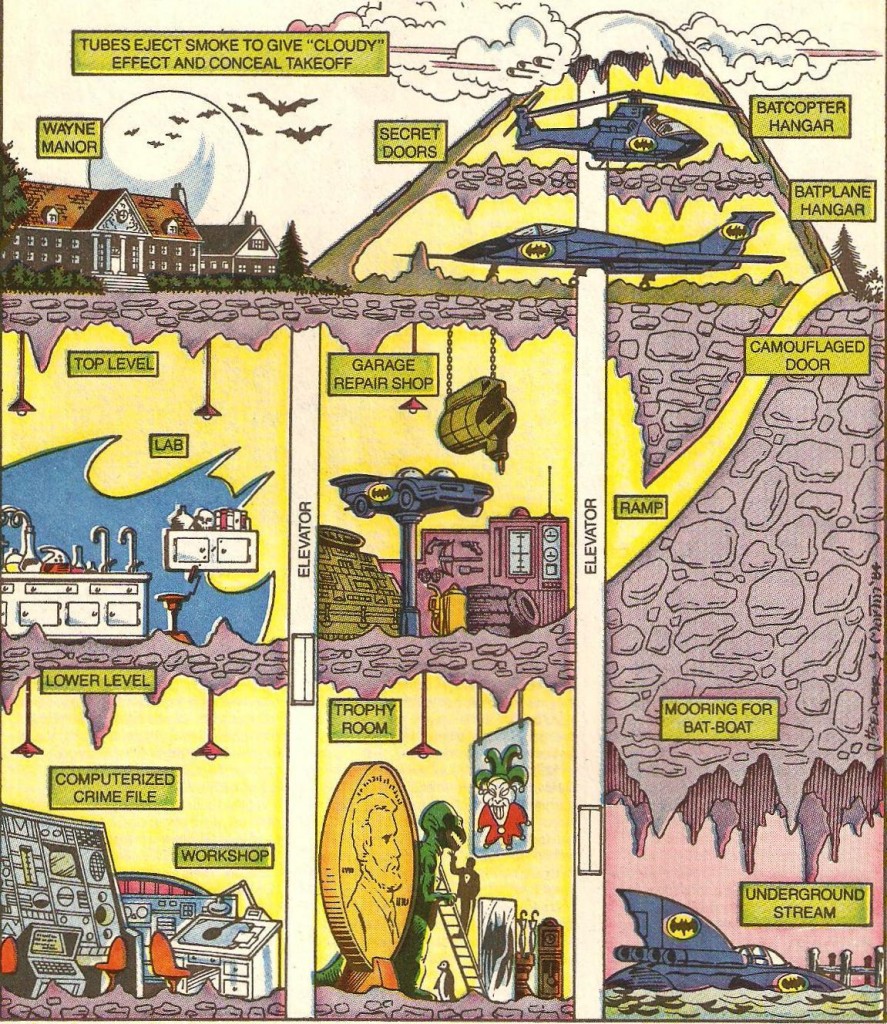
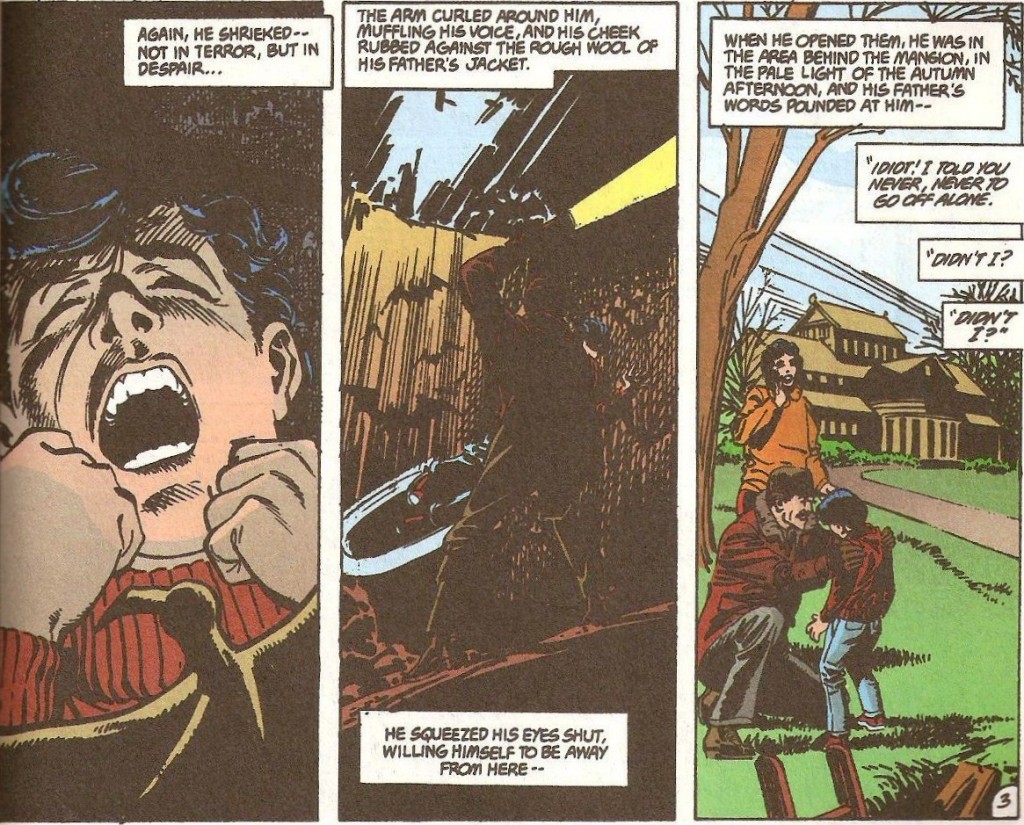
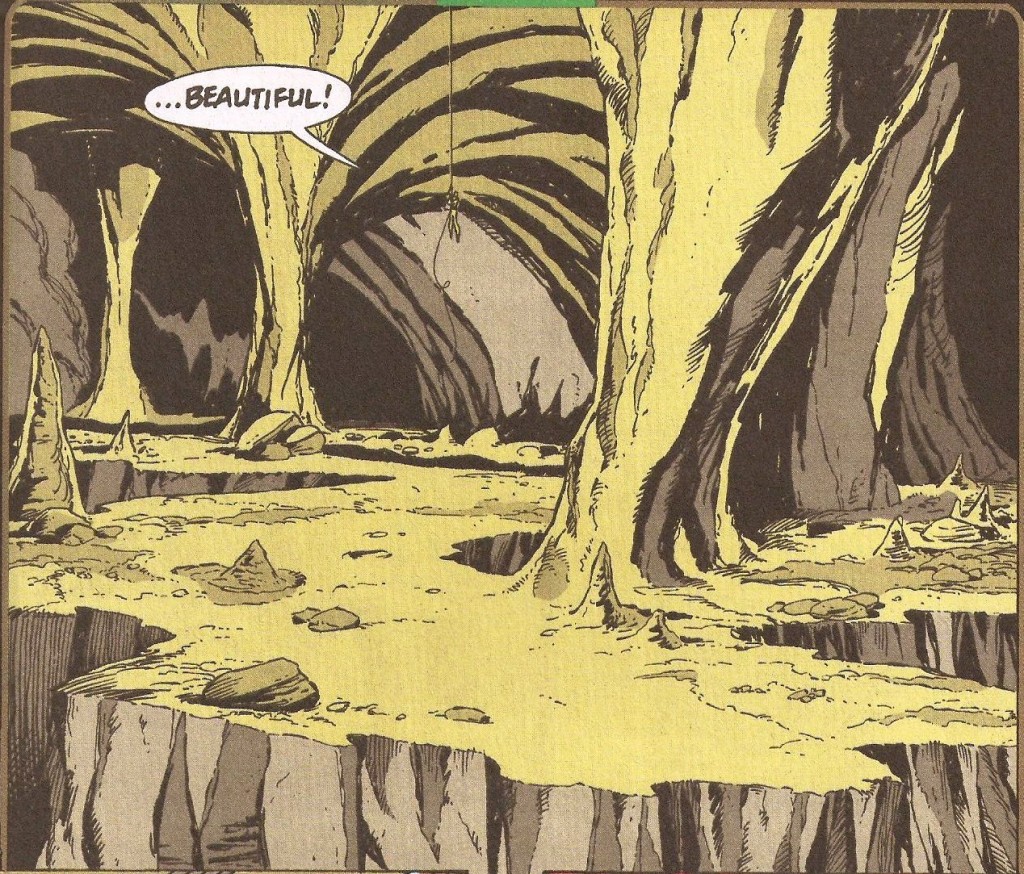
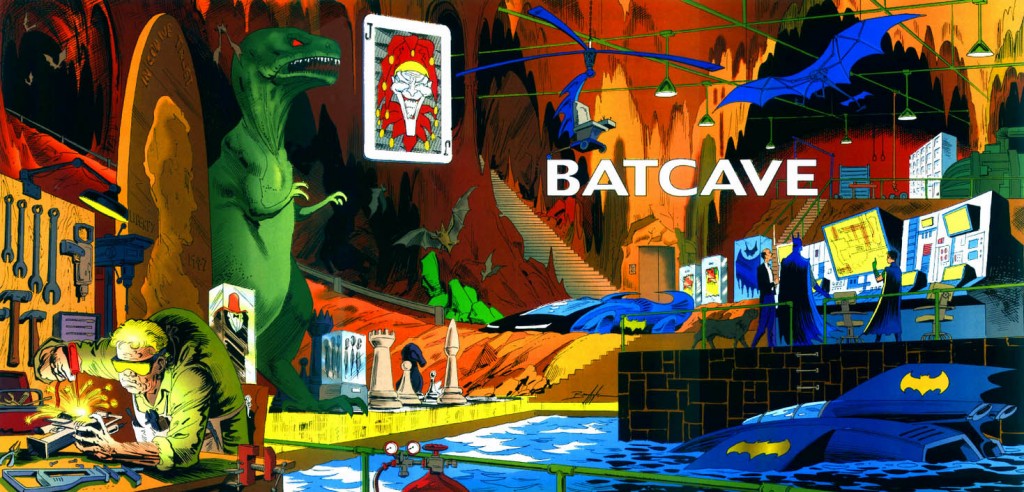

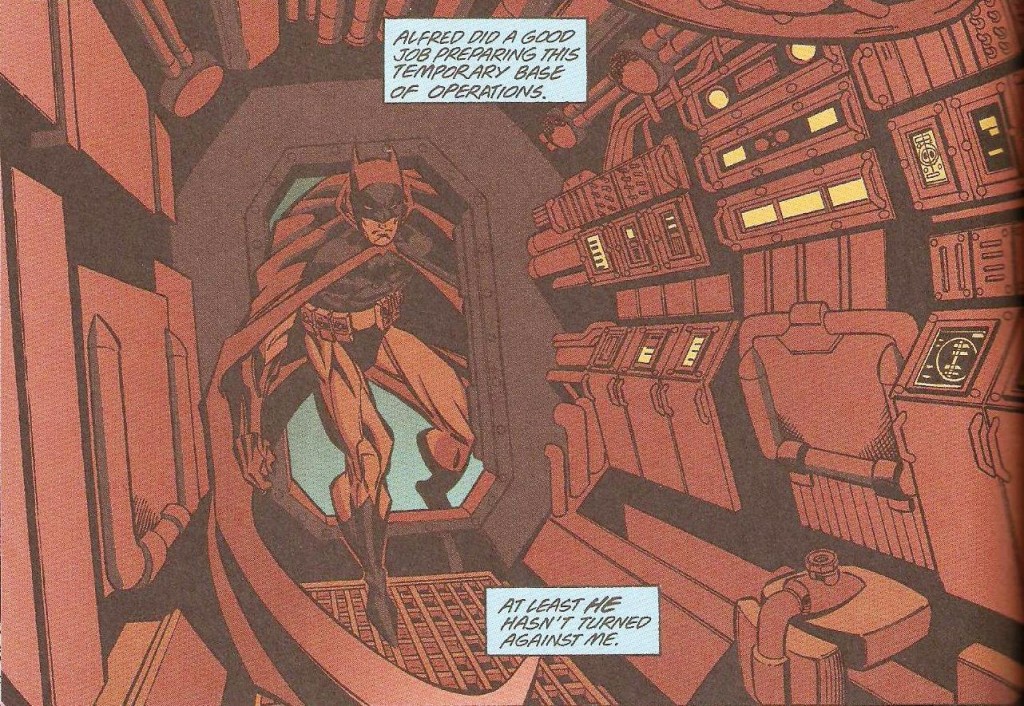

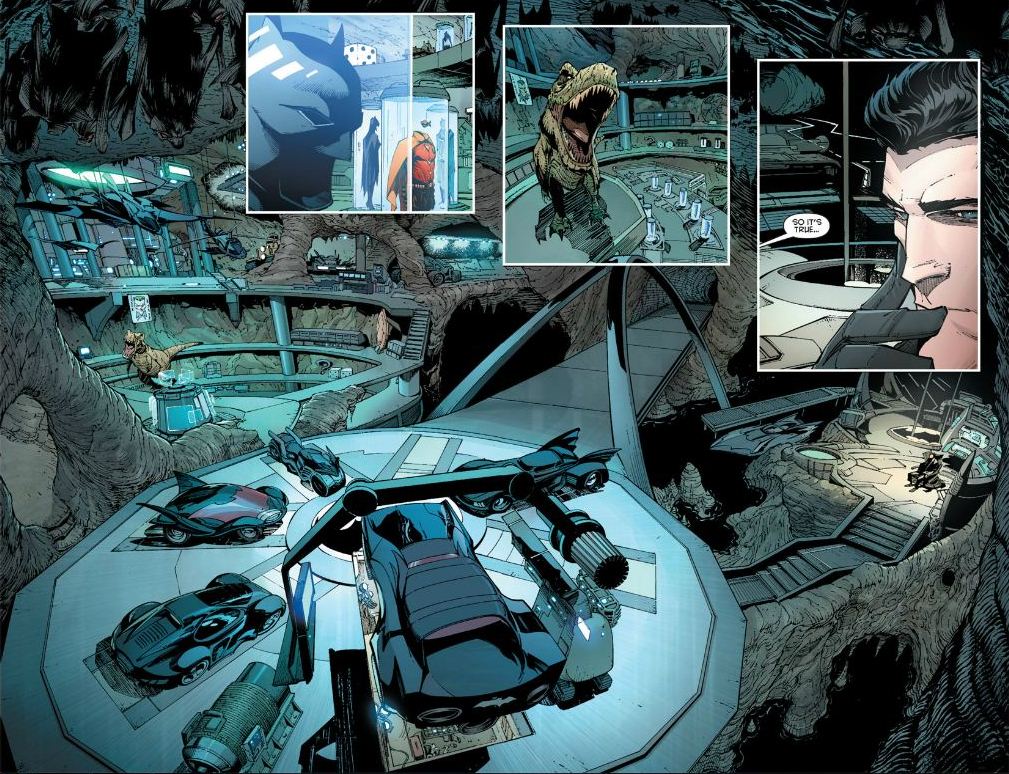


Wow – Thomas Wayne calling Bruce “Idiot?” Having never read that issue – that’s kind of jarring. Did these come before MIller’s Year One and and DKR? I believe both of Miller’s have that fall down the hole… or at least Year One.
Also – great article.
Really interesting article about the batcave here:
http://www.cracked.com/article_18968_5-reasons-there-must-be-corpses-buried-under-batcave.html
Apparently Thomas Wayne went to the Ben Stern school of parenting “I told you not to be stupid, you moron.”
Truly a man you should spend your lifetime avenging.
“Why do we fall, Bruce? Because you’re an idiot!”
“Hello, what’s this? I’m falling through the floor, quite possibly to my death. I do wonder what’s under here.” I love old comics.
Also, regarding that first picture: Who has mannequins of killers and criminals in their home? Imagine walking into someone’s house and they’ve got a lifelike statue of Jeffrey Dahmer or Ted Bundy.
I thought both of those things!
This was an excellent read, thanks so much for writing it!
I will never get tired of Sprang’s spread of the Batcave. That should be the definitive look of the Batcave.
Love these articles!
Great article. Very well put together. Loved the serial Batman video as well. Excellent job. I shared this article with a bunch of friends who are Batman fans! This read made my saturday afternoon. Keep up the amazing work.
Enjoyed reading that. DC histories really do help to explain a lot of things.